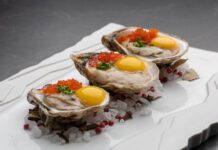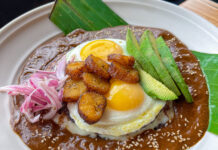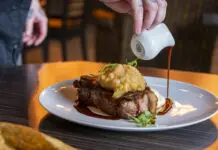This Weekend …
Let the masquerade begin… early. There are so many attractions for Halloween revelers already happening that monsters everywhere have completely booked their schedules, and here’s where you’ll find them all – from cuddly pals of the Sesame Street variety to lost souls ravaging the forest for a next meal.
For the little ones …
HallowZOOeen – Oct. 27-31
Even the animals get special treats during this special event at Tulsa Zoo, where children can trick-or-treat at stations throughout, play carnival-style games, ride the Haunted Train and much more. www.tulsazoo.org
BooHaHa – Oct. 28
Tulsa’s Brookside District closes the streets to become the annual children’s Halloween festival with a parade, costume contests for kid and pets and trick-or-treating among the merchants. brooksidetheplacetobe.com
OKC Phil: Phil’s Monster Bash – Oct. 28
The Oklahoma City Philharmonic get dressed up for an afternoon of costumes, Halloween music and treats for all kids at the Oklahoma City Civic Center Music Hall. www.okcphilharmonic.org
Magic Lantern Celebration – Oct. 28
OKC’s Paseo Arts District galleries become a costume workshop for children to make their own Halloween disguises before the costume dance at dusk. www.thepaseo.com
Storybook Forest – Thru Oct. 31
The forest around Edmond’s Arcadia Lake isn’t so scary with favorite characters and scenes from popular storybooks and tales, hayrides, hot chocolate and roasting marshmallows. www.edmondok.com
Haunt the Zoo for Halloween – Thru Oct. 31
Hunt the Oklahoma City Zoo for tricks and treats and enjoy the activities and festivities. www.okczoo.com
HallowMarine – Thru Oct. 31
The Oklahoma Aquarium turns into a Halloween adventure with trick-or-treating in the deep sea with mermaids, pirates and treasures for the kids. www.okaquarium.org
… and bigger ones.
Gazette’s Halloween Parade – Oct. 27
In its sixth year, the parade is better than ever with around 100 entries anticipated in this showcase of creativity through OKC’s Midtown and Automobile Alley. www.okgazetteparade.com
FrightFest – Thru Oct. 28
Frontier City offers plenty of tricks and treats with a pumpkin patch and treats for the little ones plus a haunted house filled with lurking creatures for everyone else. www.frontiercity.com
Tortured Souls Haunted Trail – Thru Oct. 31
This trail ride and walk through a secluded forest near the Bartlesville Round-up Club’s rodeo grounds promises screams with its live “electrocution” and the saw box. www.killingfrostproductions.com
Scream Country Haunted Forest – Thru Oct. 31
Serious scares await in Drumright’s haunted woods with trails for ages 12 and up, a haunted house and performances of Evil Dead: The Musical Fridays and Saturdays and on Halloween night. www.screamcountry.com
Hex House – Thru Oct. 31
Tulsa’s home for extreme Halloween frights is open for business southeast of 71st Street and Memorial Avenue. www.tulsahexhouse.com
The 13th Ward – Thru Oct. 31
Enter the chaos of this extreme Halloween attraction near Jenks disguised as a former mental health ward where an evil doctor experimented on criminals with disastrous results. www.the13thward.com
Psycho Path Haunted Attraction – Thru Nov. 3
Visitors brave the haunted forest near Sperry by foot or “scareage” ride in an experience combining visual effects and ghastly fiends on the loose. www.psychopathhaunt.com
Reding Farm Maize & Harvest of Fear Haunted Maize – Thru Nov. 4
The cornfield at Chickasha’s Reding Farm is designed with thrills in mind and fun. www.redsiloproductions.com






















